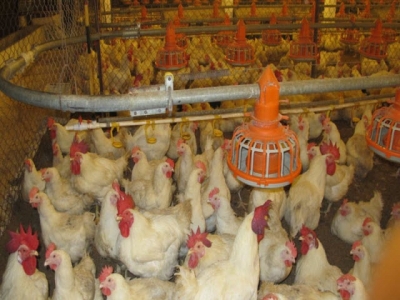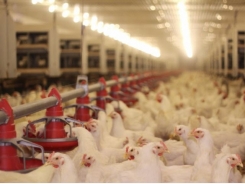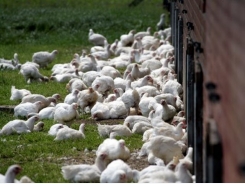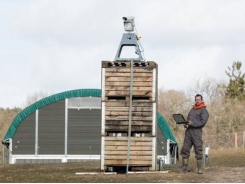Salmonella biofilms resist disinfectants in poultry processing

Common disinfectants used in chiller tanks and dipping stations at poultry processing plants are not effective against Salmonella in its biofilm state, caution Tereza Chylkova and colleagues at the University of California–Davis. [1]
Salmonella biofilms aren’t as pathogenic as free-floating Salmonella particles but, nevertheless, are significant contributors to contamination in food processing plants. However, there’s no established way to measure the sensitivity of biofilms to specific disinfectants.
Consequently, the researchers tested the effectiveness of disinfectants used by commercial poultry companies against Salmonella biofilms.
Salmonella were exposed to commonly used antimicrobial disinfectants — peroxyacetic acid (PAA), acidified hypochlorite (aCH) and cetylpyridinium chloride (CPC) — at temperatures, concentrations and contact times normally utilised in poultry processing plants.
Biofilm and planktonic cultures of five isolates of Salmonella Heidelberg and two other Salmonella strains were tested against the disinfectants at the average concentrations used by a commercial poultry company: PAA at 230 ppm, aCH at 50 ppm and CPC at 2,000 ppm. These concentrations are all within regulatory ranges established by USDA’s Food Safety and Inspection Service.
PAA and aCH did not kill or produce a significant reduction in any of the biofilm forms of the seven field strains of Salmonella tested at 4° C for 90 minutes in simulated poultry-chiller tanks, the researchers report in the July 2017 issue of the Journal of Food Protection.
In the post-chill dipping station, CPC slowed the bacteria’s growth for five of the seven Salmonella strains tested in their biofilm state but did not kill any bacteria.
The researchers conclude that to control Salmonella biofilms, PAA, aCH and CPC are not substitutes for good sanitation, proper biosecurity and Hazard Analysis and Critical Control Points.
The researchers recommend laboratory assays “as a method for determining the efficacy of disinfectants against isolated pathogens.”
References:
[1] Chylkova T, et al. Susceptibility of Salmonella Biofilm and Planktonic Bacteria to Common Disinfectant Agents Used in Poultry Processing. J Food Protection. 2017 July;80(7):1072-1079.
Related news
Tools

Phối trộn thức ăn chăn nuôi

Pha dung dịch thủy canh

Định mức cho tôm ăn

Phối trộn phân bón NPK

Xác định tỷ lệ tôm sống

Chuyển đổi đơn vị phân bón

Xác định công suất sục khí

Chuyển đổi đơn vị tôm

Tính diện tích nhà kính

Tính thể tích ao




 Single vaccine developed for avian flu and duck…
Single vaccine developed for avian flu and duck…  Layers protected by lasers
Layers protected by lasers